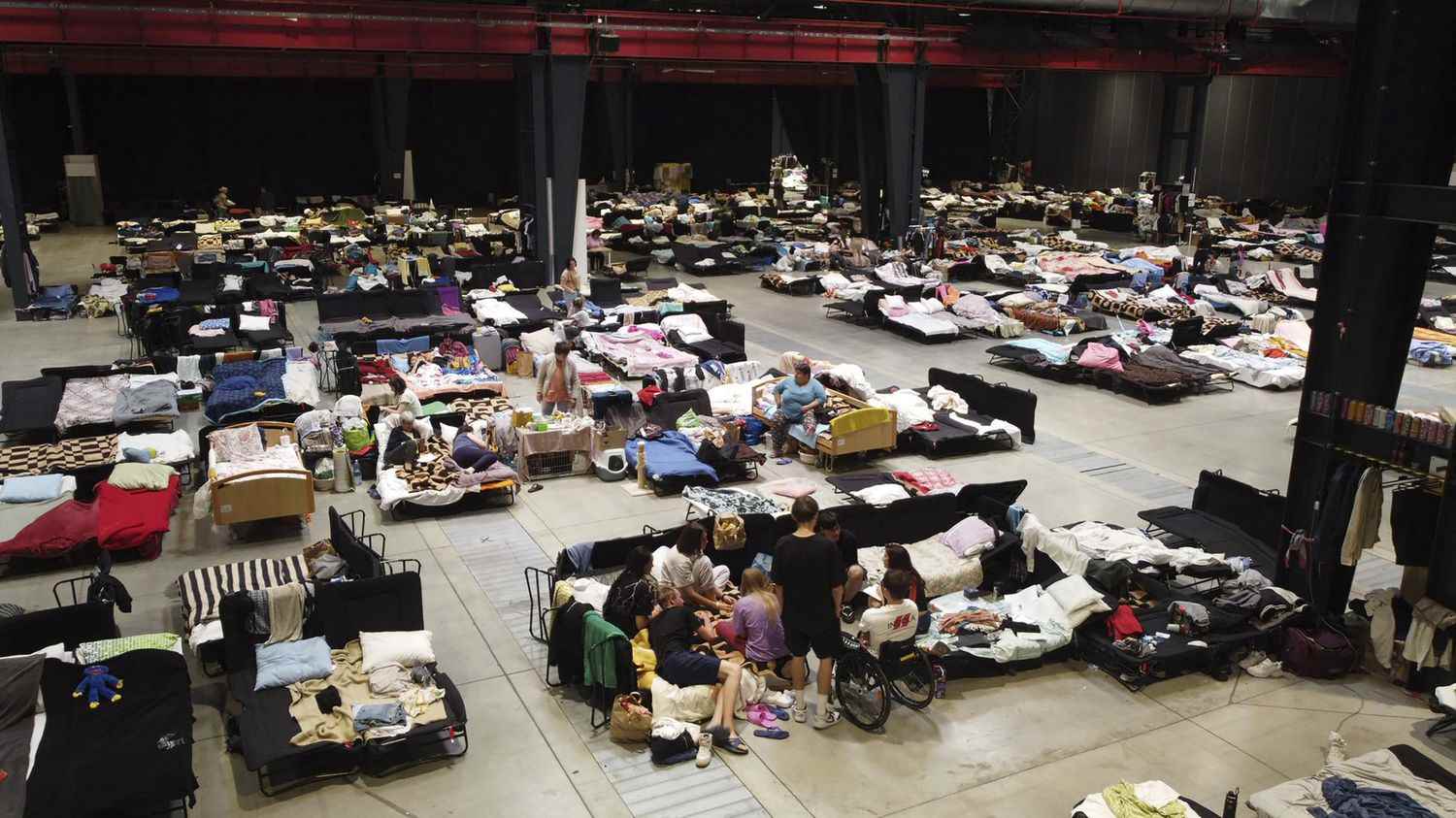After seven months of war, the question of the long-term reception of Ukrainian refugees arises almost everywhere in Europe. Temporary or joint solutions are eroding. Overview of the Correspondents’ Club in Poland, Belgium and Switzerland.
In Poland, limited government aid schemes
Five million Ukrainians found refuge in Poland in the first months of the war, of which 1.3 million are still there today: it is the country which has taken in the most exiles in the world. Poland quickly mobilized to integrate them. But after seven months of conflict, opportunities have shrunk considerably for Ukrainian families. If they can still find distribution centers for free food or clothing, there are far fewer than at the start of the war, especially in Warsaw.
Finding accommodation is more complicated. In the capital, the real estate market is saturated and the Poles no longer feel like hosting a family for several months. Announcements are becoming increasingly rare. Despite everything, the latest opinion polls show that one in two Poles still helps refugees voluntarily and free of charge. But these polls also show that 15% of respondents say they are hostile to their care.
So, to encourage its population to help Ukrainians, the state continues to provide financial support to individuals. Those who house and feed exiles from Ukraine receive 40 zlotys, that is to say 10 euros, per day and per person accommodated. But between late payments and a limited period of time – you cannot receive this aid for more than four months – the device fatigue of many Polish families.
The situation is all the same much less tense than at the beginning of the conflict. The trend is towards a return to Ukraine and the associations are adapting to this flow of refugees which has reversed. However, the onset of winter and the lack of electricity in Ukraine could push people to flee their country en masse again.
In Belgium, temporary accommodation scattered in residential areas
Belgium has already taken in 55,000 refugees, including 8,500 in Brussels. Even today, around a hundred Ukrainians arrive daily in the country’s capital, of which around thirty have no accommodation solution. As much as possible, Belgium directs them towards host families, because it is the best way of integration underlines Pierre Verbeeren, the reception coordinator in the Belgian capital, who also salutes the solidarity of Belgian citizens . To date, there are still 450 candidate households listed on the platform set up by the authorities.
At the same time, the region has nevertheless carried out work in recent months to urgently transform some 47,000 square meters of offices into housing. Several hotels are also being refurbished. And by December, prefabs will be installed in five municipalities of the agglomeration, in order to accommodate families in modular and removable habitats.
There will be only 12 to 15 dwellings on each of these sites: the idea here is not to group Ukrainian refugees together, but to insert them into residential neighborhoods to facilitate their integration among local residents. The housing is also temporary because the objective is to then guide these refugees towards private rental housing.
With around 2,000 euros in social assistance for a four-person household, and access to the job market, these Ukrainians have the means to integrate, underlines Pierre Verbeeren. It is therefore possible, and even desirable adds the coordinator: according to his calculations, approximately half of these refugees will undoubtedly remain in Belgium after the end of the war.
In Switzerland, an exhibition center mobilized in the face of the drop in the number of host families
With more than 65,000 Ukrainian refugees on its soil, Switzerland is one of those Western European countries that hosts the most in relation to its population. But finding places to stay is not always easy. In Geneva, we even had to use Palexpo, one of the largest exhibition centers in the country, to accommodate 300 Ukrainian refugees.
If the place where they are welcomed represents only a small part of the complex, it still represents two football fields, covered with a 20m high roof. Dozens of boxes are arranged in three or four rows, delimited by wire netting and plastic sheeting. Inside the boxes, 3 to 4 bunk beds, a few chairs… and that’s about it! Residents say they are quite happy with their situation, even if they would like to find more stable accommodation.
Except that it is difficult for them to find host families, because they are rare. “At the beginning of March, there are thousands of people all over Switzerland who have announced to host people in their homessays Ariane Merkelbach, director of the migrant department of the General Hospice, the social service of Geneva. It is clear that over time, motivation may decrease a little. There was the summer holidays, which reduced the number of foster families.”
Many Swiss host families have committed themselves for three to six months. But the war, as you know, has been prolonged, as has the stay of the Ukrainians with all the tensions one can imagine within the families. And as an embarrassment also among the Ukrainians, who are the first to seek a lasting rehousing solution.
